Skaben Laminate
Skaben Laminate offers you high-quality laminate flooring of various types in numerous design lines, both in wood and stone optics. Different colours and a wide range of formats leave hardly any wish unfulfilled. So you will have no problem finding a laminate floor that perfectly matches your interior. If you are looking for a laminate flooring in wood look, the following series are ideal:
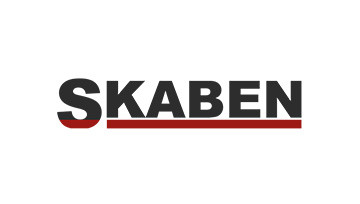
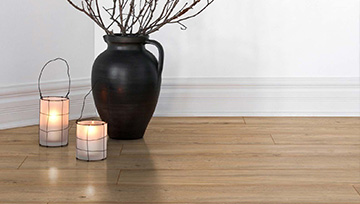
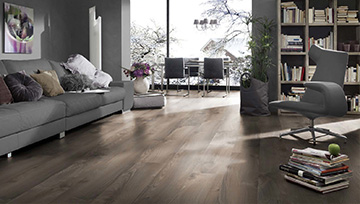
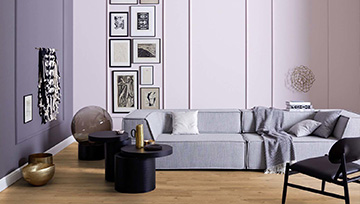
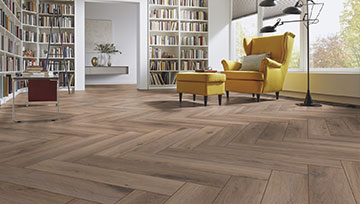
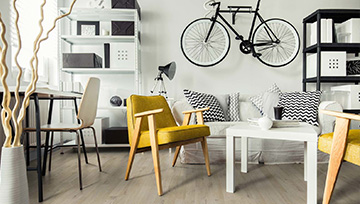
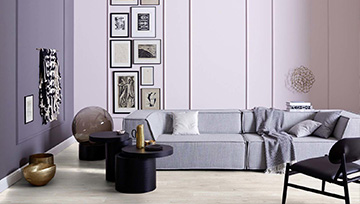

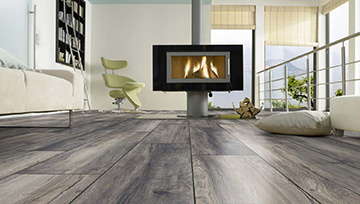
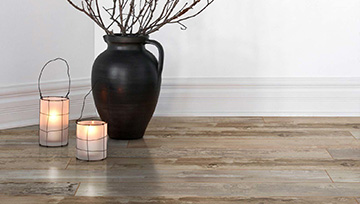

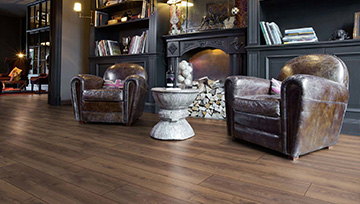
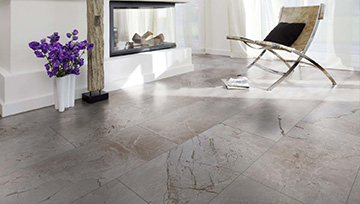
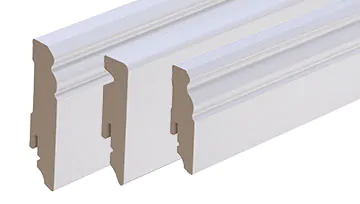
- Durable
- Flexi
- Flexi Plus
- Herringbone
- Lofty 7
- Noble 13
- Select
- Select Plus
- Slim
- Wide Plus
- XXL Plus - partial
Stone look can be found in the serie XXL Plus.
Properties of Skaben laminate at a glance
- durable
- up to 25 years warranty for residential use
- easy to clean
- quick and easy to install thanks to the click system
- floating installation
- produced without plasticisers (phthalates)
- largely lightfast
- abrasion resistant
- suitable for installation over water-bearing floor heating systems
- not suitable for installation in damp rooms
- suitable for use in both residential and commercial premises
- Multilayer construction
- flame-retardant
Preparations for laying the laminate
Before you can lay the laminate, it must be left to acclimatise for at least 48 hours in the room in which it is to be laid. To do this, lay the unopened packages with the laminate flat on the room floor. The room temperature should be at least 18 °C and the floor temperature at least 15 °C. Ensure that the subfloor on which you want to lay the laminate is level, firm, dry, clean and free of cracks. If these conditions are met, you can also lay the laminate on an old tiled or wooden floor. If the laminate is to be laid on a mineral subfloor = screed, the residual moisture of the floor must not exceed certain values. These are: 2 % for a cement screed without underfloor heating or 1.5 % for a heated cement screed. For a calcium sulphate screed these values are 0.5 % and 0.3 % (heated). These values are measured using the CM method. A screed sample is filled into a steel bottle and mixed with calcium carbide. The bottle is shaken and acetylene gas is produced. The manometer attached to the steel bottle shows the pressure increase caused by this. A calibration table can be used to determine the residual moisture from this increase in pressure. Carpets are not suitable as a substrate for laying laminate flooring. They are not a solid subfloor and would also lead to hygiene problems.
Necessary accessories for laying the laminate
As this laminate is laid as a floating installation, you will definitely need footfall sound insulation. The loose laminate forms a resonance chamber with the subfloor. This amplifies the footfall sound and room sound. The footfall sound insulation is available in different versions. Some models have an integrated moisture barrier, others also serve as thermal insulation. When laying the laminate over a water-bearing underfloor heating system or on a screed, you must install a vapour barrier, also known as a moisture barrier. This thin PE foil ensures that no moisture can penetrate the laminate flooring from below. However, you must not use a vapour barrier when laying on a wooden floor. To create a visually attractive transition between the wall and the laminate flooring, you need skirting boards. You calculate one running metre of skirting boards per square metre of floor covering. These skirtings are glued, nailed or screwed, depending on the model. When laying the laminate flooring, you must maintain an expansion gap of 10 mm to 15 mm towards the walls. This is later covered by the skirting boards. Use spacers so that you can easily maintain an even expansion joint. You can create a beautiful transition from one room to another with transition or end profiles. Use transition profiles if the floor heights are different. If the floor heights are the same, use end profiles.

